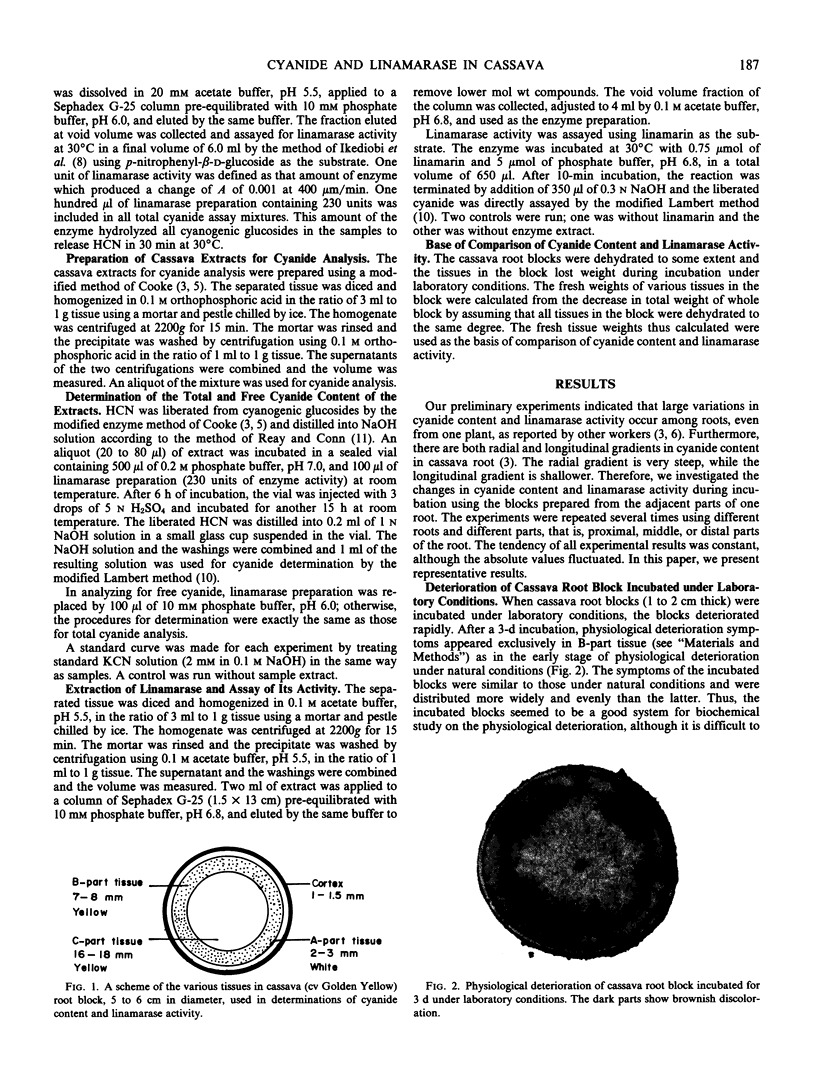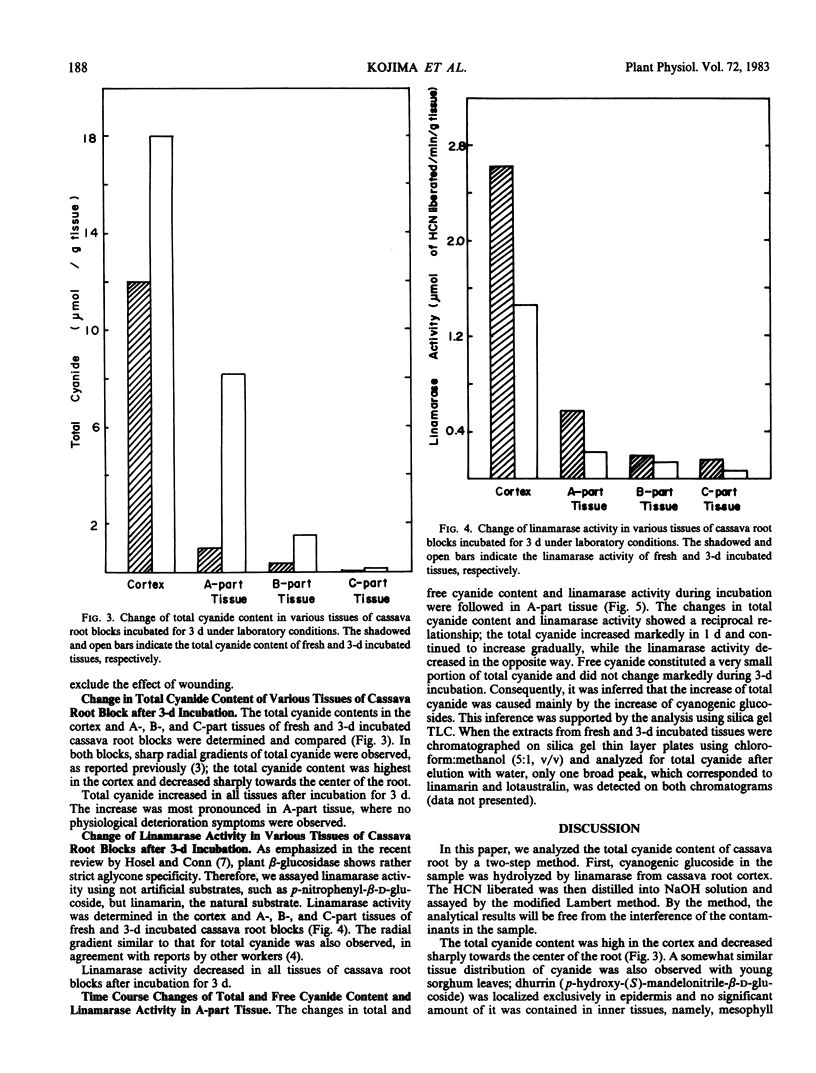Abstract
When cassava (Manihot esculenta Crantz) root was cut into blocks and incubated under laboratory conditions, the blocks showed more widespread and more even symptoms of physiological deterioration than those under natural conditions. Thus, the tissue block system has potential for biochemical studies of natural deterioration of cassava root. The changes in cyanide content and linamarase (linamarin β-d-glucoside glucohydrolase; EC 3.2.1.21) activity in various tissues during physiological deterioration were investigated. Total cyanide content increased in all parts of block tissue after 3-day incubation. The degree of increase in cyanide was most pronounced in white parenchymal tissue, 2 to 3 millimeters thick, next to the cortex (A-part tissue), where no physiological symptoms appeared. On the other hand, linamarase activity was decreased in all parts of block tissue after a 3-day incubation. A time course analysis of A-part tissue indicated a clear reciprocal relationship between changes in total cyanide and linamarase activity; total cyanide increased, while linamarase activity decreased. Free cyanide constituted a very small portion of the total cyanide and did not change markedly.
Full text
PDF



Images in this article
Selected References
These references are in PubMed. This may not be the complete list of references from this article.
- Cooke R. D. An enzymatic assay for the total cyanide content of cassava (Manihot esculenta Crantz). J Sci Food Agric. 1978 Apr;29(4):345–352. doi: 10.1002/jsfa.2740290408. [DOI] [PubMed] [Google Scholar]
- Kojima M., Poulton J. E., Thayer S. S., Conn E. E. Tissue Distributions of Dhurrin and of Enzymes Involved in Its Metabolism in Leaves of Sorghum bicolor. Plant Physiol. 1979 Jun;63(6):1022–1028. doi: 10.1104/pp.63.6.1022. [DOI] [PMC free article] [PubMed] [Google Scholar]



